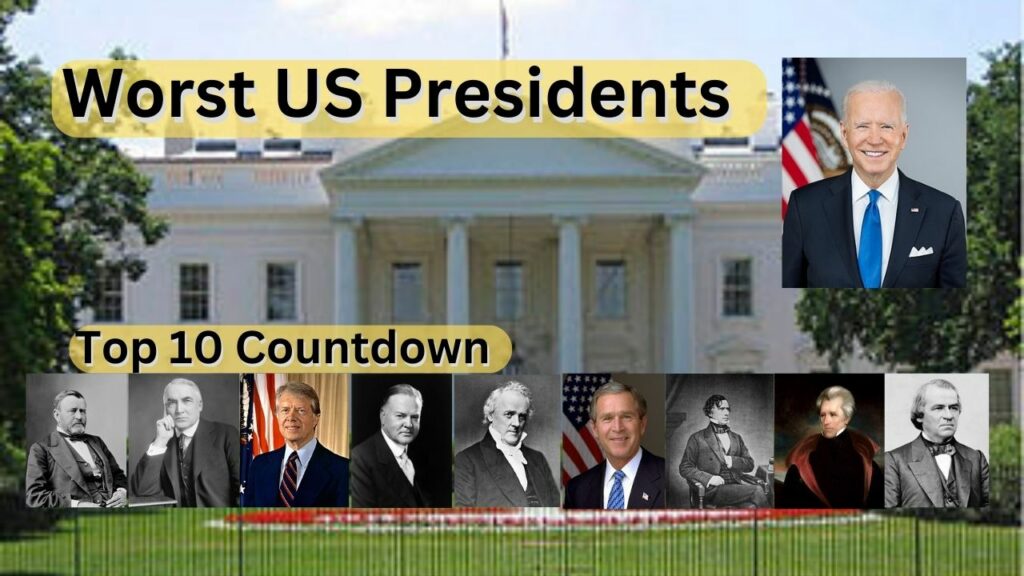
In this top 10 famous persons countdown, we look at the worst US presidents, based on several criteria. Enjoy!
Top 10 Worst US Presidents of all time:
- Joseph Biden (2021-present) – Democrat: President Biden’s administration has faced criticism for its handling of the withdrawal from Afghanistan in 2021, which resulted in chaotic scenes at the Kabul airport and the swift takeover of the country by the Taliban. Additionally, the Biden administration has struggled to effectively address the surge in illegal immigration at the U.S.-Mexico border, leading to overcrowded detention facilities and a humanitarian crisis.
- James Buchanan (1857-1861) – Democrat: Buchanan’s presidency is often criticized for his perceived inaction in the face of growing tensions between the North and the South leading up to the Civil War. His failure to take decisive measures to prevent secession and address the issue of slavery ultimately contributed to the deepening divide and the outbreak of the Civil War during the presidency of his successor, Abraham Lincoln.
- Andrew Johnson (1865-1869) – Democrat: Johnson, who assumed the presidency after Lincoln’s assassination, faced significant challenges during the Reconstruction era. His lenient approach towards Southern states and lack of support for civil rights for newly freed slaves drew condemnation. The failure to implement effective policies to protect the rights of African Americans and reconcile the nation after the Civil War tarnished his legacy.
- Ulysses S. Grant (1869-1877) – Republican: While Grant is celebrated for his military leadership during the Civil War, his presidency was marred by corruption scandals. The Grant administration saw widespread corruption within his Cabinet, with the notorious “Credit Mobilier” and Whiskey Ring scandals damaging his reputation. Grant’s struggles to control corruption within his administration overshadowed some of his achievements.
- Jimmy Carter (1977-1981) – Democrat: Carter’s presidency faced numerous challenges, including the Iranian Revolution and the hostage crisis, high inflation, and an energy crisis. The perceived mishandling of these issues contributed to Carter’s one-term presidency. The “Misery Index,” a combination of inflation and unemployment rates, reached high levels during his tenure, reflecting the economic difficulties faced by Americans.
- Warren G. Harding (1921-1923) – Republican: Harding’s presidency is often associated with the Teapot Dome scandal, one of the most infamous political scandals in U.S. history. The scandal involved the secret leasing of government oil reserves, leading to allegations of corruption within his administration. Harding’s death in office in 1923 left a cloud over his legacy, and subsequent revelations about the extent of corruption further damaged his reputation.
- Herbert Hoover (1929-1933) – Republican: Hoover’s presidency is closely linked to the onset of the Great Depression. His initial response to the economic crisis was criticized for a lack of government intervention, and his adherence to laissez-faire economic policies is considered by many to have exacerbated the severity and duration of the Depression. Hoover’s inability to effectively address the economic challenges contributed to his defeat in the 1932 election.
- George W. Bush (2001-2009) – Republican: President Bush faced significant criticism for the handling of the Iraq War, particularly the flawed intelligence leading to the invasion and the subsequent lack of stability in the region. The response to Hurricane Katrina in 2005 highlighted shortcomings in disaster preparedness and response, revealing weaknesses in the federal government’s ability to handle large-scale emergencies.
- Andrew Jackson (1829-1837) – Democrat: Jackson’s presidency is marked by his controversial policies toward Native Americans, particularly the forced removal of indigenous peoples in what became known as the Trail of Tears. His aggressive approach to nullification crises and his dismantling of the national bank also garnered criticism for concentrating power in the executive branch and favoring wealthy elites.
- Franklin Pierce (1853-1857) – Democrat: Pierce’s presidency is often criticized for his handling of the escalating sectional tensions over slavery, particularly the passage of the Kansas-Nebraska Act, which intensified the conflict. The violence that erupted in the territory further polarized the nation and set the stage for the events leading to the Civil War. Pierce’s perceived lack of leadership in addressing these issues diminished his historical standing.
Out Top 10 Worst US Presidents countdown:
10. Franklin Pierce (1853-1857) – Democrat
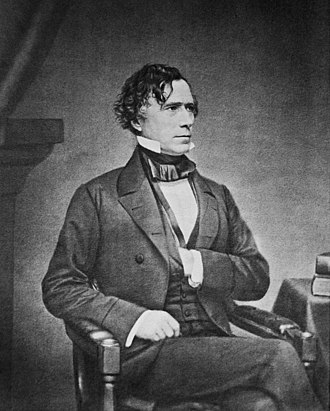
Franklin Pierce was born on November 23, 1804, in Hillsborough, New Hampshire, and died on October 8, 1869, in Concord, New Hampshire. He served as the 14th President of the United States from 1853 to 1857. Pierce’s presidency was largely defined by the escalating tensions over slavery and his controversial policies that exacerbated the sectional divide.
Ten Interesting Things about Franklin Pierce:
- Kansas-Nebraska Act: Pierce’s most significant policy, the Kansas-Nebraska Act of 1854, repealed the Missouri Compromise and allowed for the expansion of slavery into new territories based on popular sovereignty. This decision intensified the conflict between pro-slavery and anti-slavery factions, contributing to the outbreak of violence in the region.
- Compromise of 1850: Before his presidency, Pierce played a role in the Compromise of 1850 as a U.S. Senator. The compromise aimed to settle the issue of slavery in the newly acquired territories from the Mexican-American War but ultimately failed to provide a lasting resolution.
- Military Service: Pierce served in the Mexican-American War as a brigadier general, earning praise for his military service. However, his experiences may have contributed to a later reluctance to take a strong stance on divisive issues, particularly regarding the expansion of slavery.
- Tragic Personal Life: Pierce experienced personal tragedy throughout his life, including the deaths of all three of his children at young ages. The death of his only surviving son in a train accident just before Pierce assumed the presidency cast a shadow over his time in office.
- Ostend Manifesto: Pierce’s administration was involved in the Ostend Manifesto, a controversial diplomatic document that suggested the U.S. should acquire Cuba from Spain. The proposal, which was leaked and met with strong opposition, further fueled tensions between the North and the South.
- Gadsden Purchase: The Gadsden Purchase in 1853 added a strip of land to the southern U.S., facilitating the construction of a southern transcontinental railroad. While it aimed to resolve sectional disputes, it did little to ease the broader tensions over slavery.
- Struggle with Alcohol: Pierce struggled with alcohol-related issues throughout his life, leading to questions about his ability to lead effectively. His reliance on alcohol may have contributed to a perceived lack of decisiveness during his presidency.
- Democratic Party Split: Pierce faced challenges within his own party, as the Democratic Party split along sectional lines during his presidency. The divide reflected the broader schisms occurring in the country over the issue of slavery.
- Failed Reelection Bid: Pierce’s presidency was marked by controversy and sectional strife, leading to his failure to secure the Democratic nomination for reelection in 1856. His party turned to James Buchanan, who went on to win the presidency.
- Legacy of Division: Pierce’s presidency is often seen as a precursor to the Civil War. His inability to navigate the increasingly volatile issue of slavery and his support for policies that heightened tensions left a legacy of division and strife that would ultimately erupt into armed conflict.
Conclusion:
Franklin Pierce’s presidency was defined by the deepening divide between the North and the South over the issue of slavery. His attempts to navigate these tensions through compromises like the Kansas-Nebraska Act and the Gadsden Purchase ultimately failed, contributing to the fracturing of the Democratic Party and the nation as a whole. Pierce’s legacy is one of controversy and an inability to prevent the country’s slide into the Civil War.
9. Andrew Jackson (1829-1837) – Democrat

Born on March 15, 1767, in the Waxhaws region between North and South Carolina, Andrew Jackson became the 7th President of the United States, serving from 1829 to 1837. He passed away on June 8, 1845, at his plantation, The Hermitage, near Nashville, Tennessee. Despite his popularity as a military hero, Jackson’s presidency is marked by controversial policies, particularly regarding Native American removal.
Ten Interesting Things about Andrew Jackson:
- Battle of New Orleans: Jackson gained national fame for his victory in the Battle of New Orleans during the War of 1812. His success propelled him to the status of a national hero and set the stage for his later political career.
- Common Man Image: Jackson positioned himself as a champion of the common man, emphasizing his humble roots and portraying himself as an outsider challenging the political elite. This image played a significant role in his successful presidential campaigns.
- Indian Removal Policy: One of Jackson’s most controversial policies was the Indian Removal Act of 1830, leading to the forced relocation of Native American tribes, such as the Cherokee along the Trail of Tears. This policy resulted in immense suffering and loss of life among indigenous populations.
- Bank War: Jackson vehemently opposed the Second Bank of the United States, viewing it as a tool of the wealthy elite. He vetoed the recharter of the bank, contributing to the economic instability of the late 1830s.
- Nullification Crisis: Jackson faced a significant challenge to federal authority during the Nullification Crisis of 1832-1833. South Carolina, led by John C. Calhoun, declared federal tariffs null and void within the state. Jackson responded with a forceful proclamation supporting the Union and federal law.
- Spoils System: Jackson’s presidency is associated with the widespread use of the spoils system, where political supporters were rewarded with government positions. While intended to open up government positions to ordinary citizens, it led to issues of corruption and inefficiency.
- Petticoat Affair: The Petticoat Affair, or Eaton Affair, was a scandal involving Jackson’s Cabinet and the ostracism of Peggy Eaton. The controversy led to the resignation of several Cabinet members and showcased the influence of social issues on Jackson’s administration.
- Expanded Presidential Power: Jackson’s presidency is often cited as a period of expanded executive power. His use of the veto and forceful leadership style set a precedent for strong presidential authority that would be emulated by later presidents.
- Duels and Personal Honor: Jackson was involved in several duels throughout his life, most famously the duel with Charles Dickinson in 1806, where he took a bullet near his heart. His commitment to personal honor and willingness to engage in duels contributed to his tough and confrontational public image.
- Legacy of Populism: Jackson’s legacy is characterized by both his popularity among the common people and the controversies surrounding his policies. His impact on American politics is profound, laying the groundwork for populist movements and shaping the presidency in ways that continue to be felt today.
Conclusion:
Andrew Jackson’s presidency left an indelible mark on American politics, characterized by a mix of populism, controversial policies, and a forceful exercise of executive authority. While celebrated for his military achievements and connection with the common man, Jackson’s legacy is tarnished by policies such as Indian removal and the expansion of presidential power, highlighting the complexities of his impact on the nation.
8. George W. Bush (2001-2009) – Republican
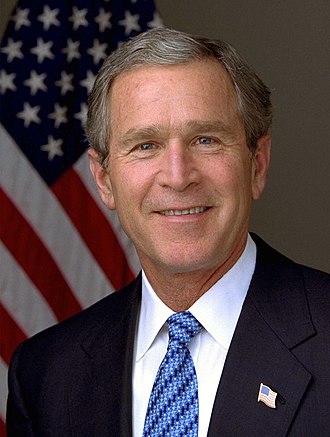
Born on July 6, 1946, in New Haven, Connecticut, George W. Bush became the 43rd President of the United States, serving two terms from 2001 to 2009. He is the son of former President George H.W. Bush and passed away on November 30, 2018. Bush’s presidency is marked by both domestic and international challenges, including the controversial Iraq War and the federal response to Hurricane Katrina.
Ten Interesting Things about George W. Bush:
- Controversial 2000 Election: The 2000 election between George W. Bush and Al Gore was one of the most controversial in U.S. history, with the Supreme Court ultimately deciding the outcome. Bush’s presidency began amid lingering questions about the legitimacy of his electoral victory.
- No Child Left Behind Act: Bush signed the No Child Left Behind Act into law in 2002, aiming to improve education standards and accountability. While the act had bipartisan support initially, it later faced criticism for its emphasis on standardized testing.
- Response to the 9/11 Attacks: The defining moment of Bush’s presidency was the September 11, 2001 terrorist attacks. His administration launched the War on Terror, invading Afghanistan to oust the Taliban and later Iraq to eliminate weapons of mass destruction, a move that drew significant international criticism.
- Iraq War and WMD Controversy: The decision to invade Iraq in 2003 was based on the belief that Saddam Hussein possessed weapons of mass destruction (WMDs). The failure to find significant WMDs damaged the credibility of the administration and fueled anti-war sentiment.
- Mission Accomplished Speech: Bush’s “Mission Accomplished” speech in 2003, declaring an end to major combat operations in Iraq, became controversial as the conflict continued for years, leading to questions about the premature nature of the declaration.
- Hurricane Katrina Response: The federal response to Hurricane Katrina in 2005 was widely criticized for its ineffectiveness and lack of preparedness. The slow response compounded the devastation and highlighted issues in emergency management at the federal level.
- Patriot Act and Surveillance Programs: In response to the 9/11 attacks, Bush signed the USA PATRIOT Act into law, expanding government surveillance powers. The act raised concerns about civil liberties and the balance between national security and individual privacy.
- Global HIV/AIDS Initiative: Bush’s administration launched the President’s Emergency Plan for AIDS Relief (PEPFAR) in 2003, providing significant funding to combat HIV/AIDS globally. The initiative has been widely praised for its impact on addressing the epidemic.
- Economic Challenges: The latter part of Bush’s presidency was marked by economic challenges, including the 2008 financial crisis. The government’s response included bailouts for major financial institutions, leading to debates about the role of government in the economy.
- Legacy of Partisanship: Bush’s presidency is often associated with increased political polarization. The contentious nature of the 2000 election, the Iraq War, and domestic policy decisions contributed to a deeply divided political landscape that persisted in the years following his presidency.
Conclusion:
George W. Bush’s presidency is characterized by a mix of significant policy initiatives, international challenges, and controversies. While praised for initiatives like PEPFAR, his legacy is also shaped by the divisive Iraq War, the aftermath of Hurricane Katrina, and the broader impact of post-9/11 policies on civil liberties and partisanship in American politics.
7. Herbert Hoover (1929-1933) – Republican
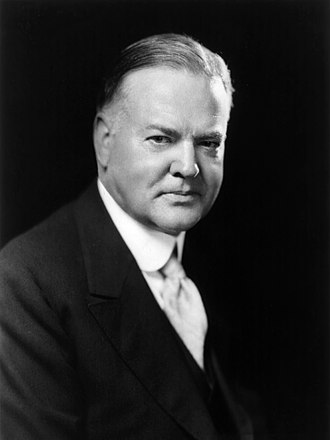
Herbert Hoover, born on August 10, 1874, in West Branch, Iowa, served as the 31st President of the United States from 1929 to 1933. His presidency began amidst the onset of the Great Depression, and Hoover faced criticism for his handling of the economic crisis. He passed away on October 20, 1964, in New York City.
Ten Interesting Things about Herbert Hoover:
- Great Depression and Economic Challenges: Hoover’s presidency was largely defined by the Great Depression, which began shortly after he took office in 1929. His initial response, rooted in a belief in limited government intervention, failed to effectively address the economic downturn.
- Hoovervilles: The shantytowns that emerged during the Great Depression were mockingly referred to as “Hoovervilles” in protest of the perceived inadequacy of Hoover’s policies to alleviate poverty and unemployment.
- Bonus Army Incident: In 1932, a group of World War I veterans known as the Bonus Army marched on Washington, D.C., demanding early payment of bonuses promised for their wartime service. Hoover’s decision to disperse the protest with military force was widely criticized.
- Hawley-Smoot Tariff: Hoover signed the Smoot-Hawley Tariff into law in 1930, raising tariffs to protect American businesses. However, this move exacerbated the economic downturn by triggering retaliatory measures from other countries, contributing to a global economic decline.
- Public Works Projects: Despite his general reluctance toward direct government intervention, Hoover did initiate some public works projects to stimulate the economy. However, these efforts were seen as too little, too late, given the scale of the economic crisis.
- Farming Crisis: The agricultural sector faced a severe crisis during Hoover’s presidency, with falling crop prices and widespread foreclosures. The Dust Bowl, a severe drought affecting the Great Plains, added to the agricultural woes.
- Hoover Dam: Hoover Dam, originally known as Boulder Dam, was a major public works project initiated during Hoover’s presidency. Although the dam provided jobs and electricity, it did not significantly impact the broader economic challenges facing the nation.
- Reconstruction Finance Corporation (RFC): Hoover established the Reconstruction Finance Corporation in 1932 to provide financial support to struggling banks and businesses. However, the RFC was criticized for primarily benefiting large corporations and not addressing the needs of ordinary citizens.
- Loss in the 1932 Election: Hoover faced a significant defeat in the 1932 presidential election against Franklin D. Roosevelt. The election reflected public dissatisfaction with Hoover’s handling of the Great Depression and a desire for more interventionist government policies.
- Later Humanitarian Efforts: Post-presidency, Hoover was involved in numerous humanitarian efforts. He coordinated relief efforts during and after World War II and was appointed by Presidents Truman and Eisenhower to lead various commissions and initiatives.
Conclusion:
Herbert Hoover’s presidency is largely remembered for his response, or perceived lack thereof, to the Great Depression. His commitment to limited government intervention and belief in voluntary cooperation among businesses failed to provide the necessary relief during one of the most challenging economic periods in American history. The Hoover administration’s policies were criticized for contributing to the severity and duration of the Great Depression, and his legacy is forever linked to the economic hardships of the 1930s.
6. Warren G. Harding (1921-1923) – Republican
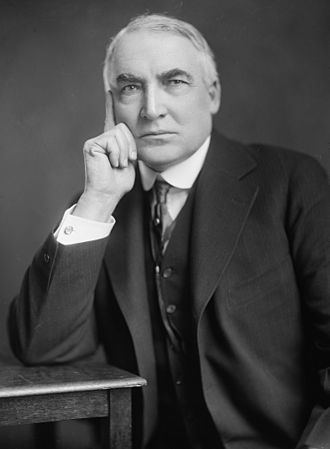
Warren G. Harding, born on November 2, 1865, in Blooming Grove, Ohio, served as the 29th President of the United States from 1921 until his death in 1923. Elected on a platform of a “return to normalcy” after World War I, Harding’s presidency was marked by both scandal and a lack of effective leadership. He passed away on August 2, 1923, in San Francisco, California.
Ten Interesting Things about Warren G. Harding:
- Teapot Dome Scandal: Harding’s presidency is overshadowed by the Teapot Dome scandal, one of the most infamous political scandals in U.S. history. The scandal involved the illegal leasing of federal oil reserves, revealing corruption within his administration.
- Return to Normalcy: Harding campaigned on a promise to return the nation to normalcy after the tumultuous years of World War I. However, his administration faced difficulties in managing the transition to peacetime and addressing economic challenges.
- Washington Naval Conference: Harding convened the Washington Naval Conference in 1921, which aimed to reduce naval armaments among major powers and ease tensions in the Pacific. The conference was a diplomatic success but did not address deeper issues leading to World War II.
- Economic Policies: Harding advocated for pro-business policies, including tax cuts and limited government intervention in the economy. While these policies contributed to a brief post-war economic boom, they also set the stage for the economic challenges of the late 1920s.
- Fordney-McCumber Tariff: Harding signed the Fordney-McCumber Tariff into law in 1922, raising tariffs on imported goods to protect American industries. The tariff contributed to a decline in international trade and strained relationships with European nations.
- Death and Succession: Harding’s presidency was cut short by his sudden death in 1923. Vice President Calvin Coolidge succeeded him and worked to restore public trust in the wake of the Teapot Dome scandal.
- Ohio Gang: Harding’s administration was marred by corruption, largely attributed to the “Ohio Gang,” a group of Harding’s friends and political allies. The group engaged in corrupt practices, contributing to the overall perception of a scandal-ridden presidency.
- Press Relations: Harding had a friendly relationship with the press, which contributed to his popularity during his campaign. However, the lack of critical scrutiny allowed scandals to fester within his administration.
- Civil Rights and Immigration: Harding made some efforts to address civil rights issues, including advocating for anti-lynching legislation. However, his administration also supported restrictive immigration policies, reflecting the nativist sentiments of the time.
- Legacy of Controversy: Harding’s legacy is one of controversy and scandal. While he enjoyed popularity during his presidency, revelations about corruption emerged after his death, tarnishing his reputation. The Teapot Dome scandal remains a lasting symbol of the ethical lapses within his administration.
Conclusion:
Warren G. Harding’s presidency is remembered for its mix of scandal, limited leadership, and a desire to return the nation to normalcy. While Harding enjoyed popularity during his brief time in office, the revelations of corruption and the Teapot Dome scandal have cast a long shadow over his historical legacy, marking him as one of the least respected presidents in U.S. history.
5. Jimmy Carter (1977-1981) – Democrat
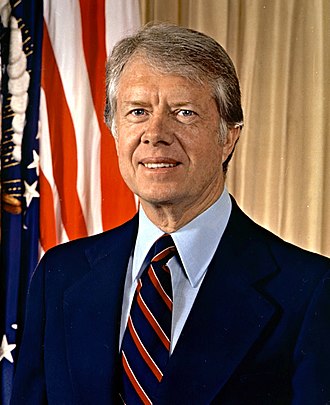
James Earl Carter Jr., born on October 1, 1924, in Plains, Georgia, served as the 39th President of the United States from 1977 to 1981. Carter’s presidency faced numerous challenges, including economic troubles, the Iranian Revolution, and the hostage crisis. He is still alive at the time of publication in December 2023, but his wife just passed away.
Ten Interesting Things about Jimmy Carter:
- Camp David Accords: One of Carter’s notable achievements was the Camp David Accords in 1978, which brokered peace between Israel and Egypt. The agreement laid the groundwork for future Middle East peace talks.
- Iran Hostage Crisis: Carter faced a major crisis with the Iran Hostage Crisis, where 52 Americans were held hostage by Iranian militants for 444 days. The failed rescue mission and prolonged captivity damaged Carter’s reputation.
- Energy Crisis and “Malaise” Speech: Carter addressed the nation in a televised speech in 1979, often referred to as the “malaise” speech, addressing the energy crisis and urging Americans to conserve energy. The speech was criticized for its perceived lack of optimism.
- Panama Canal Treaty: Carter negotiated the Panama Canal Treaty, which led to the eventual transfer of control of the Panama Canal to Panama. The treaty faced opposition in the U.S. Senate but marked a significant diplomatic achievement. 40 years later, the canal is mostly Chinese owned, and the fees to access the canal doubled the day after sale to the country of Panama for a mere $1.
- Economic Stagnation: Carter’s presidency struggled with economic challenges, including high inflation and unemployment. His administration’s inability to effectively address these issues contributed to his one-term presidency.
- Human Rights Diplomacy: Carter emphasized human rights in U.S. foreign policy, making it a central theme of his administration. This approach led to both praise and criticism, with some seeing it as a principled stance and others as impractical.
- SALT II Treaty: Carter signed the SALT II treaty with the Soviet Union in 1979, aiming to limit nuclear arms. However, the treaty faced challenges in the Senate and was eventually withdrawn by Carter following the Soviet invasion of Afghanistan.
- Boycott of the 1980 Summer Olympics: In response to the Soviet invasion of Afghanistan, Carter ordered a U.S.-led boycott of the 1980 Summer Olympics in Moscow, a decision that drew mixed reactions.
- Crisis of Confidence Speech: Alongside the “malaise” speech, Carter delivered a “Crisis of Confidence” speech in 1979, addressing a perceived crisis in American confidence and calling for a renewal of national spirit. The speech had limited immediate impact.
- Post-Presidential Activities: After leaving office, Carter engaged in various humanitarian efforts, including work with Habitat for Humanity and global health initiatives. His post-presidential activities have garnered respect, but his presidency remains a subject of historical debate.
Conclusion:
Jimmy Carter’s presidency is a mix of achievements and challenges. While he successfully brokered the Camp David Accords and pursued a human rights-oriented foreign policy, his term was marred by the Iran Hostage Crisis, economic troubles, and difficulties in communicating a clear vision to the American people. Carter’s post-presidential activities have helped reshape his public image, but his time in office remains a complex chapter in U.S. history.
4. Ulysses S. Grant (1869-1877) – Republican
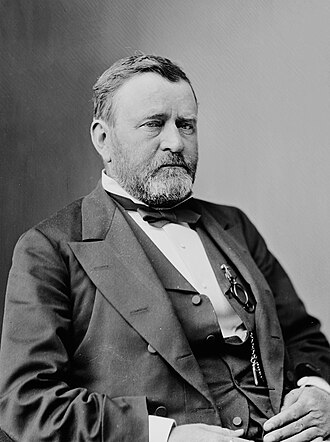
Ulysses S. Grant, born on April 27, 1822, in Point Pleasant, Ohio, served as the 18th President of the United States from 1869 to 1877. Grant is celebrated for his role as a Union general during the Civil War but faced challenges during his presidency, including corruption scandals. He passed away on July 23, 1885, in Wilton, New York.
Ten Interesting Things about Ulysses S. Grant:
- Civil War Leadership: Grant emerged as a prominent Union general during the Civil War, earning recognition for his victories at Forts Henry and Donelson, Shiloh, Vicksburg, and the eventual defeat of Robert E. Lee at Appomattox Court House in 1865.
- Corruption Scandals: Grant’s presidency was marred by corruption scandals, including the notorious “Credit Mobilier” and “Whiskey Ring” scandals. These incidents involved bribery and financial improprieties within his administration, tarnishing his reputation.
- Reconstruction Policies: Grant’s approach to Reconstruction aimed at protecting the rights of newly freed slaves. However, his administration faced criticism for its handling of Southern resistance and its failure to fully address civil rights issues.
- Indian Peace Policy: Grant pursued a policy of peace with Native American tribes, attempting to assimilate them into white culture through education and agriculture. However, conflicts continued on the frontier, contributing to tensions.
- Panic of 1873: Grant’s second term was marked by the Panic of 1873, a severe economic depression. The administration struggled to respond effectively to the economic downturn, leading to widespread unemployment and suffering.
- Fifteenth Amendment: Grant supported and ratified the Fifteenth Amendment in 1870, granting voting rights to African American men. This marked a significant step forward for civil rights, although challenges persisted in the implementation of these rights.
- Yellowstone National Park: Grant signed legislation in 1872 establishing Yellowstone National Park, the first national park in the world. This action set a precedent for the preservation of natural landscapes for future generations.
- Treaty of Washington: Grant’s administration negotiated the Treaty of Washington in 1871, resolving outstanding issues between the United States and Great Britain, including disputes over the Alabama Claims from the Civil War.
- Grant’s Memoirs: Facing financial ruin due to failed investments, Grant wrote his memoirs while battling terminal throat cancer. Completed just before his death, “The Personal Memoirs of Ulysses S. Grant” became a critical and commercial success, providing financial security for his family.
- Post-Presidential Diplomacy: After leaving office, Grant embarked on a world tour, meeting with leaders in Europe and Asia. He became a respected figure in international diplomacy, advocating for peace and reconciliation.
Conclusion:
Ulysses S. Grant’s presidency is a tale of contrasts, featuring both significant achievements and notable challenges. While celebrated for his military leadership and efforts to protect civil rights, Grant faced difficulties in managing corruption within his administration and addressing economic crises. His post-presidential life, marked by successful memoirs and diplomatic activities, added a layer of redemption to his legacy.
3. Andrew Johnson (1865-1869) – Democrat
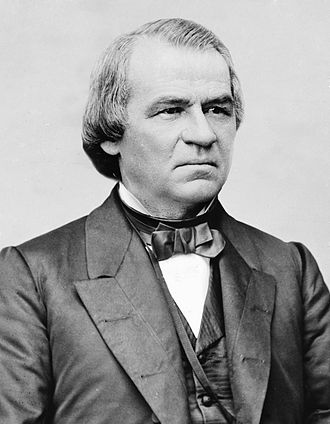
Andrew Johnson, born on December 29, 1808, in Raleigh, North Carolina, became the 17th President of the United States, serving from 1865 to 1869. He assumed the presidency after Abraham Lincoln’s assassination and faced immense challenges during the tumultuous period of Reconstruction following the Civil War. Johnson passed away on July 31, 1875.
Ten Interesting Things about Andrew Johnson:
- Tailor Turned Politician: Johnson began his career as a tailor and entered politics as a self-educated man. His rise from alderman to mayor, state legislator, governor, senator, and ultimately vice president showcased his political journey.
- Tennessee’s Only Senator: During the Civil War, Johnson was the only Southern senator who remained loyal to the Union. This loyalty led to his appointment as military governor of Tennessee by President Lincoln.
- Lincoln’s Vice President: Chosen as Abraham Lincoln’s running mate in 1864, Johnson was a Southern Democrat intended to symbolize national unity. However, his presidency would be marked by clashes with the Radical Republicans over Reconstruction policies.
- Johnson’s Reconstruction Plan: Johnson’s approach to Reconstruction favored a more lenient policy toward the Southern states, granting amnesty to former Confederates and allowing them to rejoin the Union with few conditions. This stance clashed with the more stringent views of the Radical Republicans in Congress.
- Impeachment Trial: Johnson became the first U.S. president to be impeached by the House of Representatives in 1868. The primary charge was violating the Tenure of Office Act by attempting to remove Secretary of War Edwin M. Stanton from his post. Johnson narrowly avoided removal from office after the Senate fell one vote short of the required two-thirds majority.
- Failure to Protect Freedmen: Johnson’s Reconstruction policies were criticized for not doing enough to protect the rights and freedoms of newly emancipated African Americans. His refusal to advocate for equal civil rights and voting rights further strained relations with Congress.
- Johnson’s Amnesty Proclamations: Johnson issued several amnesty proclamations, pardoning many former Confederates and restoring their property rights. This lenient approach allowed some former Confederate leaders to regain political power.
- Homestead Act of 1868: Johnson signed the Homestead Act of 1868, which provided 160 acres of public land to settlers for a small fee, given they improve the land by building a dwelling and cultivating crops. This legislation aimed to encourage westward expansion.
- Purchase of Alaska: During Johnson’s presidency, the United States negotiated and completed the purchase of Alaska from Russia in 1867 for $7.2 million. This acquisition, initially ridiculed as “Seward’s Folly,” later proved to be a valuable addition to U.S. territory.
- Post-Presidential Years: After leaving office, Johnson returned to Tennessee and briefly served in the U.S. Senate. He continued to express his views on Reconstruction and clashed with the policies of his successors.
Conclusion:
Andrew Johnson’s presidency is marked by the tumultuous period of Reconstruction after the Civil War. His lenient approach to the Southern states and failure to protect the rights of freedmen contributed to ongoing racial tensions. The impeachment trial further underscored the challenges he faced in navigating the complex political landscape of post-war America. Despite some legislative successes, Johnson’s legacy remains tarnished by his struggles with Congress and the enduring controversies of Reconstruction.
2. James Buchanan (1857-1861) – Democrat
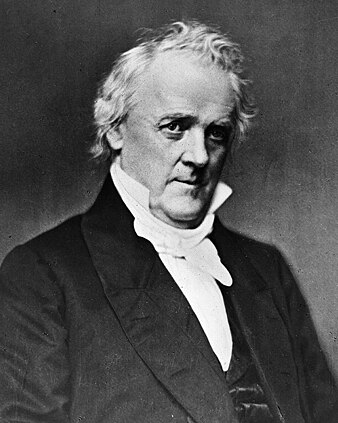
James Buchanan, born on April 23, 1791, in Cove Gap, Pennsylvania, served as the 15th President of the United States from 1857 to 1861. Buchanan’s presidency is largely remembered for his inability to prevent the nation’s slide into the Civil War. He passed away on June 1, 1868, in Lancaster, Pennsylvania.
Ten Interesting Things about James Buchanan:
- Bleeding Kansas Crisis: Buchanan faced the escalating violence of the Bleeding Kansas crisis, a prelude to the Civil War, as pro-slavery and anti-slavery settlers clashed over the territory’s future. His handling of the situation was widely criticized for exacerbating tensions.
- Dred Scott v. Sandford Decision: The Supreme Court’s Dred Scott decision in 1857, which declared that African Americans could not be citizens and that Congress had no authority to prohibit slavery in the territories, further intensified sectional divisions. Buchanan supported the decision.
- Lecompton Constitution: Buchanan’s support for the pro-slavery Lecompton Constitution in Kansas, despite its fraudulent nature, angered both anti-slavery and some pro-slavery factions. The controversy further divided the Democratic Party.
- Panic of 1857: Buchanan faced the economic challenges of the Panic of 1857, a severe financial crisis marked by bank failures and high unemployment. His response, advocating for limited government intervention, drew criticism for its perceived ineffectiveness.
- Utah War: The Utah War, a conflict between the U.S. government and Mormons in the Utah Territory, occurred during Buchanan’s presidency. While the conflict was peacefully resolved, it highlighted tensions between federal authority and religious autonomy.
- Failed Attempt at a Kansas Constitution: Buchanan’s attempt to admit Kansas to the Union under the pro-slavery Lecompton Constitution failed in Congress, contributing to the Democratic Party’s fragmentation and paving the way for the election of Abraham Lincoln in 1860.
- John Brown’s Raid: The raid on Harpers Ferry by abolitionist John Brown in 1859 heightened tensions between North and South. Buchanan’s response was criticized for its lack of decisiveness and failure to address the root causes of the conflict.
- Lack of Leadership During Secession: As Southern states began to secede from the Union after the election of Abraham Lincoln, Buchanan was criticized for his perceived lack of leadership. He believed secession was illegal but also believed the federal government had no authority to stop it.
- Retirement and Post-Presidential Years: Following his presidency, Buchanan retired to his estate in Wheatland, Pennsylvania. Despite ongoing national turmoil and the outbreak of the Civil War, Buchanan remained largely silent on political matters.
- Historical Evaluations: Buchanan’s presidency is consistently ranked among the least successful in U.S. history. His perceived indecisiveness, failure to address the growing crisis over slavery, and inability to prevent the secession of Southern states contribute to his negative historical assessment.
Conclusion:
James Buchanan’s presidency is synonymous with the country’s descent into the Civil War. His handling of the sectional crisis, from Bleeding Kansas to the secession of Southern states, is widely criticized for its lack of effective leadership and failure to avert the nation’s greatest conflict. Buchanan’s legacy remains one of ineffectiveness during a pivotal period in American history.
1. Joseph Biden (2021-present) – Democrat
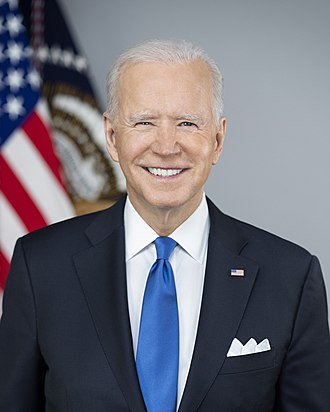
Joseph Biden, born on November 20, 1942, in Scranton, Pennsylvania, assumed office as the 46th President of the United States on January 20, 2021. He is still in office. Biden’s presidency has faced challenges, including the ongoing COVID-19 pandemic, the border crisis, economic issues such as high gas and food prices, and political polarization.
Ten Interesting Things about Joseph Biden:
- COVID-19 Pandemic Response: Biden inherited the presidency during the global COVID-19 pandemic and immediately focused on ramping up vaccination efforts, implementing mask mandates, and providing economic relief to individuals and businesses affected by the pandemic. It turned out that masks do not work, and that the vaccine has most likely killed or injured more people than the pandemic itself.
- 1994 Violent Crime Control and Law Enforcement Act: Also known as the Biden crime bill, it was a comprehensive piece of legislation that included a range of provisions, some of which have been linked to increased incarceration rates among Black Americans. The crack cocaine sentencing disparity, in particular, has been criticized for disproportionately impacting Black Americans, as crack cocaine offenses carried a much longer mandatory minimum sentence than powder cocaine offenses, even though the drugs are chemically similar.
- Infrastructure and Jobs Plans: Biden proposed ambitious infrastructure plans, including the American Jobs Plan and the American Families Plan, with a focus on improving physical infrastructure, addressing climate change, and investing in education and social programs. America is now over $30 trillion in debt, and now interest payments are more than $1 trillion per year.
- Withdrawal from Afghanistan: Biden faced criticism for the U.S. withdrawal from Afghanistan in August 2021, which led to the rapid takeover of the country by the Taliban and the chaotic evacuation of American citizens and Afghan allies. Over $85 billion in high tech military equipment, including rockets, drones, helicopters and millions of rounds of ammunition were left behind.
- Voting Rights and Democracy Reform: Biden advocated for voting rights and democracy reform, supporting the For the People Act and the John Lewis Voting Rights Advancement Act to address voting access, gerrymandering, and campaign finance issues. As with all democrats, Biden believes that voter ID is a threat to democracy.
- Foreign Policy Challenges: The Biden administration navigated challenges in U.S. relations with Russia, China, and other international partners miserably. Issues such as cyberattacks, human rights concerns, and trade tensions shaped the global landscape. He has given over $75 billion to Ukraine, depleted our own military munitions, and now seems to support war between Israel and Hamas. Meanwhile he has personally taken money from both Russia and China via his son Hunters corporations, known as the 10% for the big guy scandal.
- Depletion of National Strategic Oil Reserves and climate change: Biden rejoined the Paris Agreement on climate change and committed the U.S. to ambitious climate goals. He also sold much of the strategic oil reserves to China, and used the rest to attempt to lower gas prices, which have skyrocketed under his term as president. He has attempted to outlaw gas stoves.
- Border and Immigration Policies: The Biden administration faced scrutiny for its handling of immigration and border policies, including an increase in arrivals at the U.S.-Mexico border. Debates centered on border security, migrant detention, and pathways to citizenship. It is estimated that over 10 million illegal migrants have crossed the border under Biden, including thousands of known terrorists, not to mention the hundreds of thousands of fentanyl deaths.
- Infrastructure Legislation Success: Despite political challenges, Biden succeeded in passing a bipartisan infrastructure bill, focusing on traditional infrastructure projects such as roads, bridges, and broadband. The bill aimed to address long-standing infrastructure needs in the United States. Over $50 billion go towards supposed climate change, while only $10B goes to roads and bridges infrastructure.
- COVID-19 Vaccination Mandates: To combat the ongoing pandemic, Biden announced vaccination mandates for federal workers and large businesses. These measures faced legal challenges and ignited debates about public health, individual freedoms, and government intervention. Now more young people die of heart problems than ever before, and a new category, “Sudden Adult Death Syndrome” has appeared, beginning not long afer the introduction of the mRNA vaccines.
Conclusion:
Joseph Biden’s presidency is characterized by the complex challenges of the 21st century, including the ongoing pandemic, economic recovery, and political polarization. While he has achieved legislative successes, Biden has faced criticism for aspects of his foreign policy, the withdrawal from Afghanistan, and the management of domestic issues. As with any presidency, ongoing events and policy decisions will continue to shape the evaluation of his tenure. Just in: records showing Biden was paid directly from son Hunters corporation, which took money from Russia and China.
If you enjoyed this Top 10 list, you might want to read the Top 10 Best US Presidents countdown as well.
